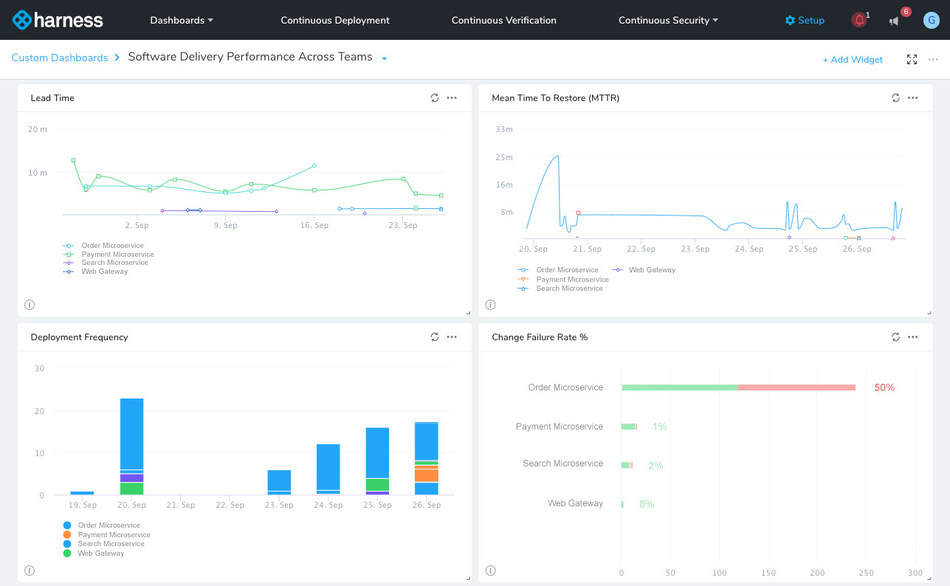Harness has added an analytics module to its namesake continuous delivery-as-a-service (CDaaS) platform that makes it easier to better align constrained software development resources with business goals.
Omed Habib, director of product marketing at Harness, said Continuous Insights enables organizations to identify bottlenecks and improve overall software delivery by automatically gathering metrics such as deployment frequency, lead time, mean-time-to-restore (MTTR) and change failure rate.

Habib said the biggest challenge organizations face when it comes to continuous delivery is the delicacy of most IT environments. All the interdependencies between complex systems force IT organizations to rely on manual processes and custom scripts, he said, noting the process of rolling back an application whenever there is an issue can take days and weeks.
The Harness CDaaS platform provides a more seamless approach to application delivery that automatically detects new builds in GitHub, Bamboo, Jenkins, Artifactory or Nexus repositories or any Git repository. Once the DevOps team is alerted, they can employ graphical tools to not only automate the process of building pipelines using YAML files but also leverage machine learning algorithms to evaluate the quality of a deployment and then automatically roll it back whenever necessary by accessing data from tools such as AppDynamics, New Relic, Splunk, Elastic Search and Sumologic, added Habib.
Harness comes in three flavors. There is a Professional Edition supported by Harness and a free forever Community Edition. There’s also an Essentials Edition aimed at medium-sized companies that do not require a full set of enterprise and security features. The Continuous Insights analytics module is free for all new and existing customers of the Harness Professional Edition.
Habib said that despite all the advances being made in terms of DevOps and continuous integration, organizations are still struggling with continuous delivery. Because many of them don’t seem to be able to push code into production as quickly as the code can be built, the pace of innovation within IT environments is being stifled. As business leaders wonder why that pace of innovations has slowed, many of them are now demanding access to application delivery metrics.
It’s not clear to what degree providing access to those metrics will entice organizations to adopt a CDaaS platform. However, as developers and business leaders alike become more frustrated with the pace of application delivery, a groundswell for change is starting to build. Many IT leaders are now looking to automate as much of the application delivery process to prevent that frustration from morphing into a full-scale mutiny.
In the meantime, there’s an old adage that says things measured are things done. Not everyone may appreciate all the newfound attention being paid to key performance indicators for application delivery. However, the truth is most organizations are not going to ever really solve the application delivery conundrum until somebody starts producing relevant metrics that enable them to comprehend the true scope of the challenge.





